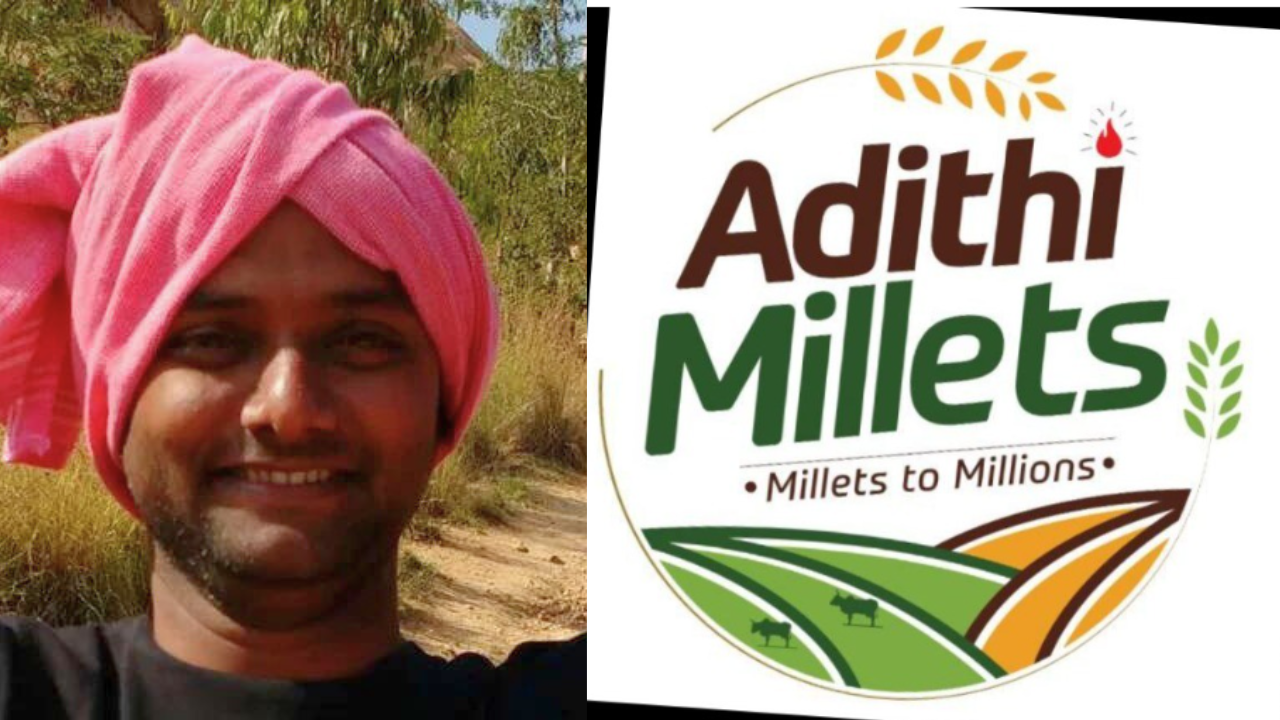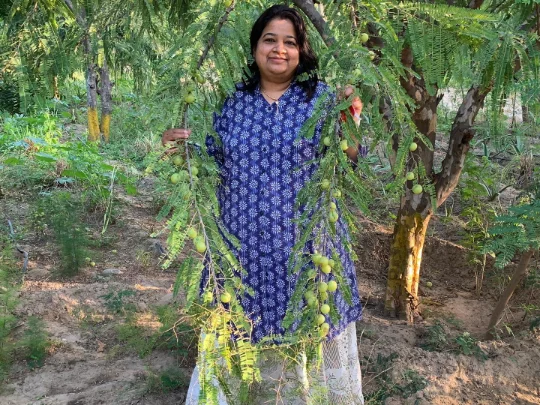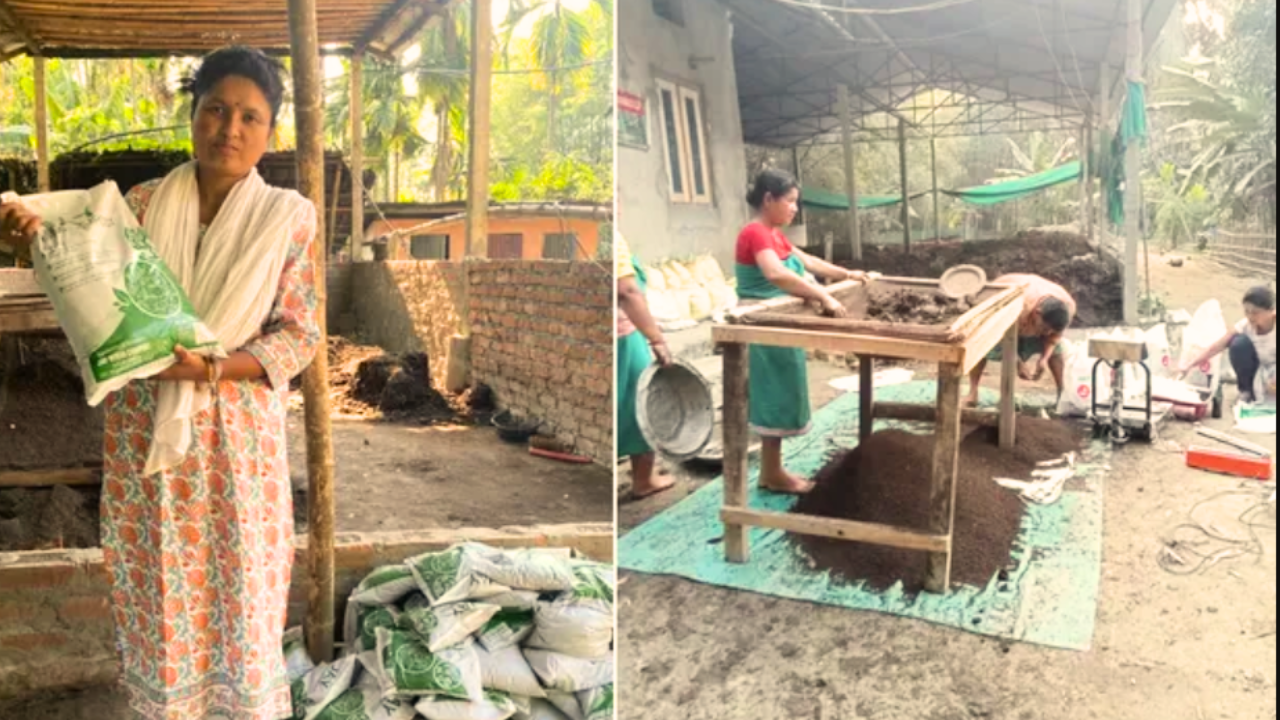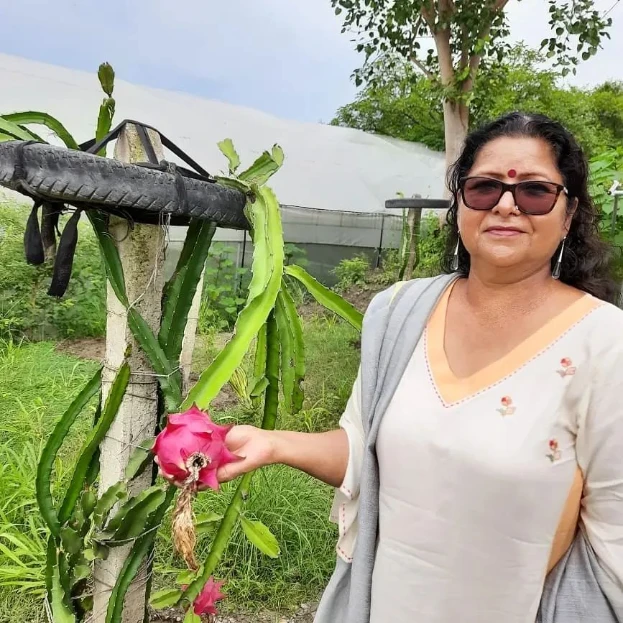In 2012, Vijayakumar Narayanan, who hails from Palakkad, returned from Muscat after working various jobs for two decades. He wasn’t sure what to do next. One option was to farm at his ancestral house in Nanniyode, but he needed a plan.
He delved into books to learn about modern farming techniques and suitable crops for Kerala’s climate. After researching, he decided to pursue aquaponics – a method that combines aquaculture, hydroponics, and organic farming. In this approach, nutrients from fish waste enrich the water used for growing plants.
During his time in Muscat, he attended classes on hydroponics, a soil-free farming method. Aquaponics, similar to hydroponics, intrigued him due to its organic nature and the potential for dual income from fish and crops. He explained, “Aquaponics bears resemblance but is more organic, offering the added benefit of generating dual income from fish.”
An incident during the 2012 monsoon season led him to take the aquaponics path. A large tree in his backyard collapsed, leaving a hole that filled with rainwater. This inspired him to use the pit as a water tank for his aquaponics system.
Today, his fish tank houses various fish species including Nile tilapia, carp, giant gourami, and ornamental fish. He feeds them natural inputs like Azolla, colocasia leaves, rice bran, black soldier fly larvae, coconut, and groundnut oil cake, which are affordable and organic.
Close to the tank, Vijayakumar grew an assortment of vegetables, encompassing broccoli, lettuce, spinach, mint, tomatoes, okra, chilies, and brinjal.
The fish waste produces ammonia, which, through bacterial action, transforms into nitrites and nitrates – ideal fertilizers for plants. Even his banana plants benefit from nutrient-rich water.
One of the significant advantages of aquaponics is the potential for dual yields from both fish and vegetable farming. When he began, there were few aquaponic farms in Kerala. To spread knowledge, he established the Nanniode Aquaponics Research and Development Centre (NARDC) in his village. Here, he offers classes on aquaponics organic farming, integrated aquaculture, horticulture under polyhouse/rain shelter, pest management, organic farming, commercial enterprise development, and more.
NARDC conducts tests on various seed varieties within integrated aquaponic systems. They sell live fish, fresh greens, and safe vegetables and fruits to local Community Supported Agriculture (CSA) subscribers. Additionally, they collaborate with governments, universities, NGOs, private sector organizations, individual farmers, and franchisees to advance aquaponics.
Vijayakumar has trained over 5,000 farmers across the country in both online and offline settings, not limited to aquaponics but spanning various agricultural fields. He also supports the establishment of aquaponic farms through social franchising, having helped set up farms in multiple Indian regions and even Gulf countries.
Achieving greater outcomes with minimal space
“To set up an aquaponics farm, all you need is a compact land area, approximately equivalent to 2 cents, covering less than 900 square feet in total. Out of this, one cent is used for the fish pond, and the rest is for growing crops. This setup can allow you to cultivate around two tonnes of fish. If you’re new to this, it’s recommended to start with tilapia, as they are beginner-friendly. However, it’s crucial to take proper classes before diving into aquaponics, as it’s quite different from traditional farming,” explains the person experienced in this practice.
Vijayakumar emphasizes the importance of checking the pH level of the water before introducing young fish. For growing plants, a layer of sand is spread along the pond’s edges. The best sand to use is quartz silica, which contains more organic elements compared to river sand. To maintain the system, two pumps are essential: one for aerating the pond and the other for circulating water over the sand biofilters where plants grow. “You can get these items with subsidies from the horticulture department,” he points out.
Vijayakumar notes that almost all types of vegetables can be successfully grown using this method, except for tubers. He assures that although there might be instances of airborne pests attacking, these can be effectively controlled using biopesticides.
Speaking from experience, the aquaponics consultant shares, “I make around Rs 4 lakh per year from this type of farming. Your earnings will vary based on the area and investment you put in.” He also introduces another aquaponics initiative called The Venus Project, with a goal to provide clean, fresh, and highly nutritious fish, vegetables, and fruits year-round to about 130 people (equivalent to 30 families). The plan is to distribute the food locally through weekly subscription packages.
Enthusiastically, the agripreneur behind the Venus project adds that they already support 26 local households by providing them with weekly supplies of nutritious food, including vegetables, fruits, and fish.







